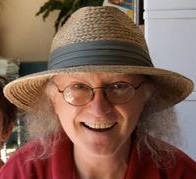10.3: Urea Cycle
- Page ID
- 66036

The cycle scavenges free ammonia (as ammonium ion) which is toxic if it accumulates. The capture reaction also requires ATP, and bicarbonate, and the product is carbamoyl phosphate. This molecule is combined with the non-protein amino acid known as ornithine to make another non-protein amino acid known as citrulline. Addition of aspartate to citrulline creates argninosuccinate, which splits off a fumarate, creating arginine (a source of arginine). If arginine is not needed, it can be hydrolyzed to yield urea (excreted) an
ornithine, thus completing the cycle.
The first two reactions described here occur in the mitochondrion and the remaining ones occur in the cytoplasm. Molecules of the urea cycle intersecting other pathways include fumarate (citric acid cycle), aspartate (amino acid metabolism), arginine (amino acid metabolism), and ammonia (amino acid metabolism).
Contributors and Attributions
Dr. Kevin Ahern and Dr. Indira Rajagopal (Oregon State University)


